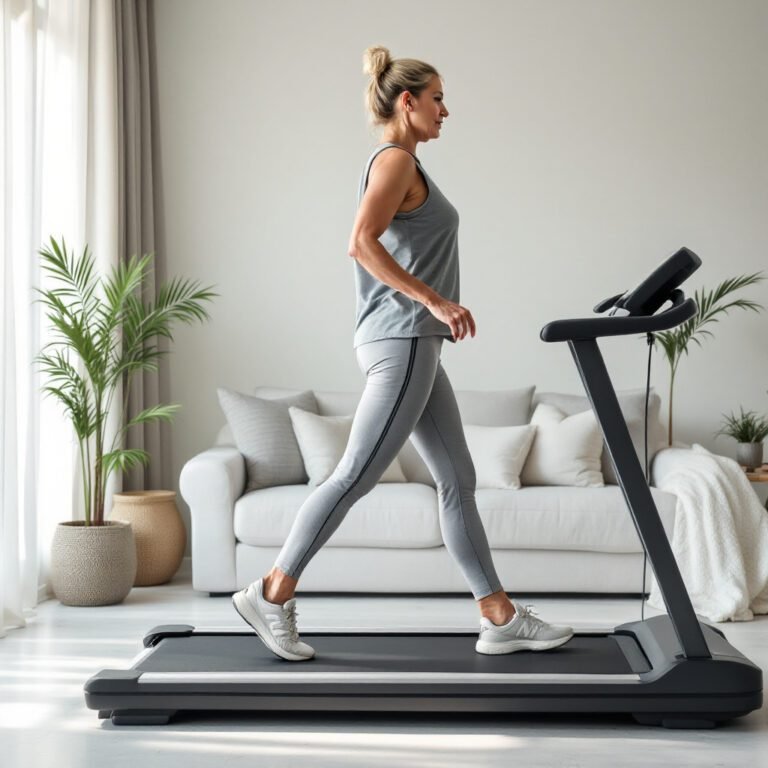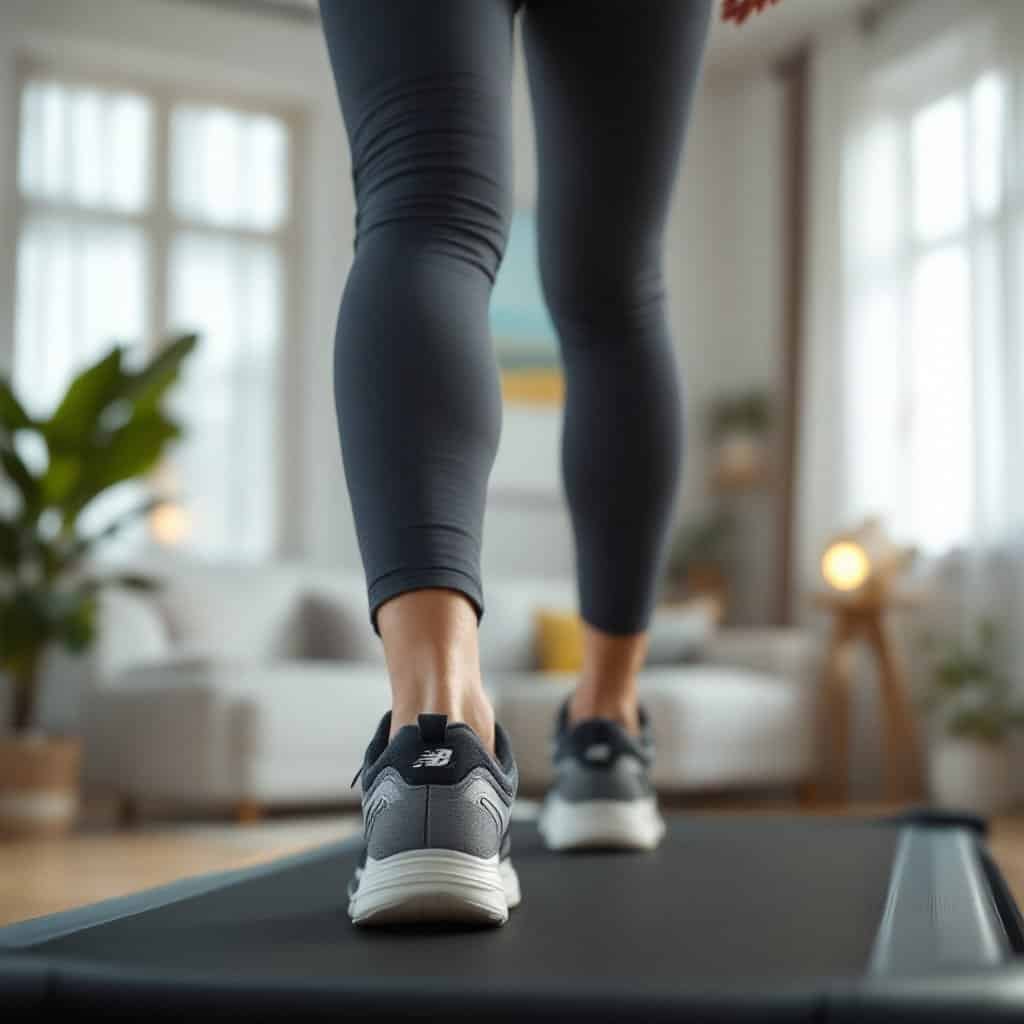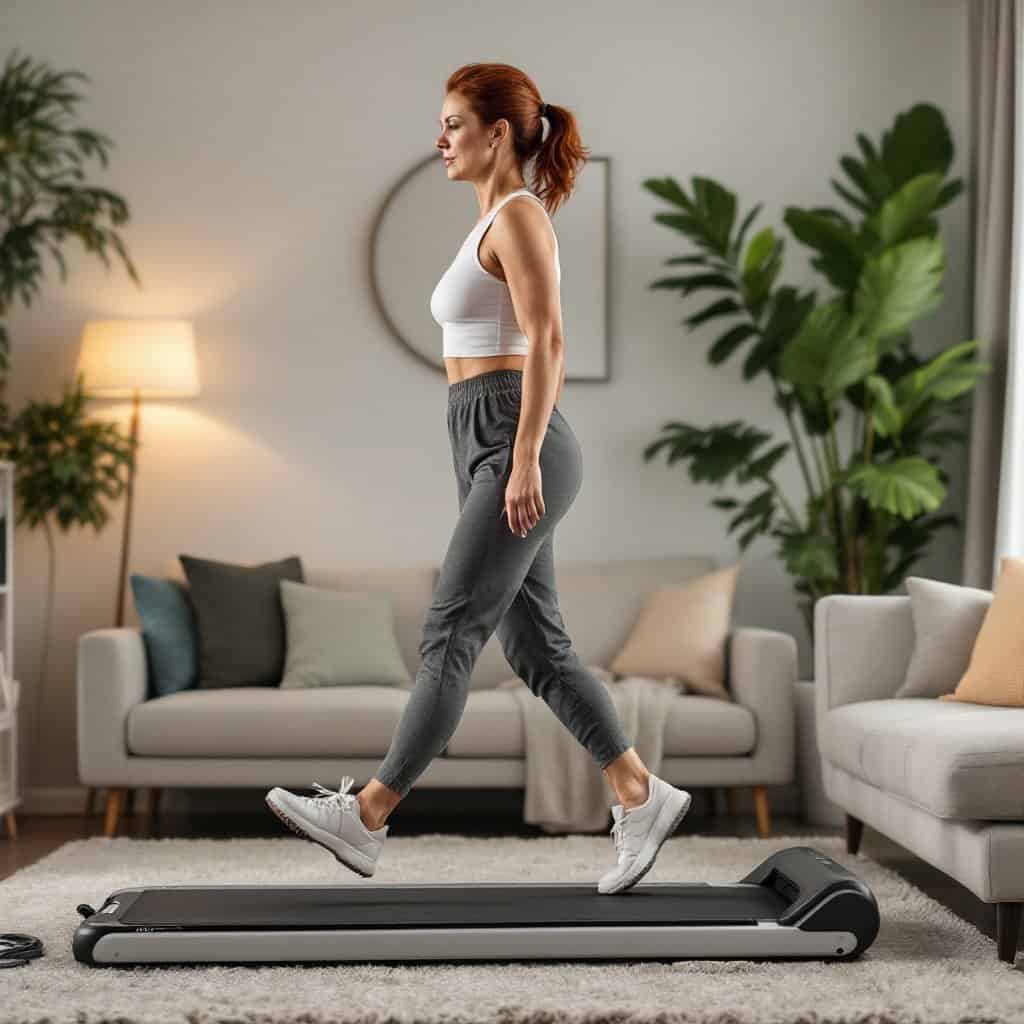10 Ways to Get 10,000 Steps a Day Without Even Trying
Table of Contents
Walking 10,000 steps a day is one of the simplest ways to boost your health and energy. But with busy schedules and endless to-do lists, it might feel impossible to hit that number. The good news? Small, practical changes can add up fast. You can sneak in steps throughout your day—no extra effort or major time commitment required. Let’s explore easy strategies that fit into your routine and make those 10,000 steps feel effortless.

Start with 10-Minute Intervals
If the idea of walking 10,000 steps feels overwhelming, here’s a simple fix: break it down. Short bursts of walking throughout the day can add up quickly. By focusing on 10-minute intervals, you can sneak steps into your schedule without turning your day upside down.
Small Chunks, Big Impact
Life can get busy, but that doesn’t mean your step count has to suffer. The beauty of 10-minute walks is that they’re manageable. You don’t need an hour of uninterrupted time; just a few smaller chunks woven into your day can do the trick. Plus, stepping away for 10 minutes can clear your head and make you more productive.
Think about those random breaks: waiting for an appointment, coffee brewing, or even those few minutes before your next meeting starts. These small windows are golden opportunities. Use a timer or set reminders on your phone to prompt you. Once you start, it becomes second nature.
Here are a few scenarios to fit in 10 minutes:
- Post-meal strolls: Walk around your block after breakfast, lunch, or dinner. It’s great for digestion too.
- Work breaks: Use part of your lunch break or take a quick loop around the parking lot.
- Park farther away: Whether at the store or work, intentionally park at the far end for a mini-walk.
- School drop-off or pick-up: Arrive early, park nearby, and take a quick walk before heading back.
You’ll be surprised how quickly these small efforts snowball into thousands of steps. It’s less about finding extra time and more about making walking a natural part of your day.

Walk While on Phone Calls
Phone calls don’t have to mean sitting still. Whether you’re chatting with friends, catching up with family, or stuck in a meeting, walking while talking is one of the easiest ways to add steps without changing your schedule. All you need to do is stand up, start moving, and let the steps flow naturally.
Seamless Integration into Daily Life
Walking during phone calls is so natural, you might not even notice you’re exercising. Think about it: how often are you on the phone each day? Instead of zoning out on the couch or pacing in a small area, use this time to get active. With a 30-minute call, you can easily rack up 3,000 steps or more just by walking at a moderate pace. That’s nearly a third of your daily goal—just by staying on your feet.
Here’s where it fits perfectly into your routine:
- Work meetings: Turn those long conference calls into something more productive with a brisk indoor or outdoor walk.
- Catch-up calls: Whether it’s your mom, a friend, or a quick check-in with a client, grab your phone and go.
- Video chats: If the camera isn’t necessary, there’s no reason you can’t move around while chatting.
Pro tip: Use a headset or wireless earbuds to keep your hands free and cut down on distractions. Walking while on the phone doesn’t just add steps—it helps you stay focused and energized, too.

Use a Walking Pad or Treadmill at Home
Adding a walking pad or treadmill to your home setup can transform the way you approach daily movement. These tools allow you to rack up steps without having to leave the house, making it easier than ever to integrate walking into your day. Whether you’re working, watching TV, or checking emails, you can stay active and hit your step goals effortlessly.
Multitasking While Walking
Why choose between getting things done and staying active when you can do both? Walking pads and treadmills are designed for multitasking, making them a great fit for your busy schedule. Here’s the best part—you don’t even realize you’re exercising most of the time.
- Work from home: Pair a walking pad with a standing desk, and you can walk while responding to emails or sitting through meetings. It breaks up sitting time and keeps you energized.
- Entertainment time: Watch your favorite TV show, listen to a podcast, or catch up on YouTube while walking. It turns relaxing into a productive activity.
- Online shopping or scrolling: Why sit while browsing online stores, scrolling Instagram, or checking the news? Hop on the treadmill instead.
Walking while multitasking doesn’t just help you physically—it also boosts mental health. Moving keeps your blood flowing, which can improve focus and reduce stress. Plus, it’s a great way to combat the sluggishness that comes from staying stationary for too long.
A walking pad is especially useful if you’re short on space. These compact devices can slide under a couch or bed when not in use, so they’re perfect for small apartments or home offices. It’s about making movement a seamless part of your day-to-day life. Why sit still when you can get moving and cross tasks off your list at the same time?

Park Farther Away on Purpose
Parking farther from your destination is one of the simplest ways to add more walking into your day. It’s a small, intentional choice that can sneak in extra steps without taking much time. Plus, it’s surprising how quickly those extra steps add up, making a noticeable difference in your daily total. This small habit change works whether you’re grocery shopping, running errands, or heading to work.
Planning for Extra Steps
Parking at the far end of a parking lot might feel like a chore at first, but it’s all about planning ahead. The next time you head out, give yourself a minute or two of extra time to park farther back. That’s all it takes to fit in more movement without rushing or feeling stressed.
Think about the typical parking lot experience: circling to find the closest spot, burning time and gas, all for a few fewer steps. Skip the hunt and head straight to the back. Not only will you avoid the parking lot chaos, but you’ll also have a clear path to walk.
Here are a few quick tips to make this habit stick:
- Leave earlier: Set your departure time just two minutes ahead of schedule. Those couple of minutes go a long way.
- Choose consistency: Make it a rule to always park at least five rows back, no matter where you’re going.
- View it positively: Use this time to clear your thoughts or mentally prepare for your next task.
When you’re strategic with your time, this minor adjustment blends into your routine effortlessly. Over a week, those extra rows can become a few extra miles—and you might not even notice the change. Small tweaks like this are how you reach your step goals without making life harder.

Take the Stairs
Taking the stairs is a simple yet effective way to get extra steps throughout your day. It’s one of those small lifestyle changes that can quickly add up without the need to carve out additional time. Stairs are everywhere—offices, parking garages, malls, or even at home. By intentionally choosing stairs over elevators and escalators, you not only increase your step count but also give your muscles a mini workout.
Increasing Intensity and Burn
Climbing stairs isn’t just about steps; it packs a punch when it comes to intensity. Walking up stairs requires your body to work harder than walking on flat ground, which means you’ll burn more calories in less time. Think of it as squeezing maximum value out of minimal effort.
Stairs engage major muscle groups like your glutes, hamstrings, and quads while also giving your heart rate a boost. This added effort turns a simple walk into a quick cardio session. For every flight of stairs you climb, you’re not only adding to your step count but also building strength and endurance.
Let’s break it down with some easy-to-follow strategies:
Skip elevators when possible: Make a conscious decision to hit the stairs instead. Even climbing one or two flights can make a difference.
Take it slow and steady: Don’t feel like you need to race. Even a casual pace on the stairs is more effective than flat walking.
Double up: Feeling adventurous? Take two steps at a time for an extra challenge.
Incorporate stairs into your daily routine: At work, skip the elevator. At home, take an extra trip up and down just because.
Think of climbing stairs like “power walking” in disguise. It’s a functional, scalable way to turn ordinary moments into movement opportunities. Plus, it’s entirely free—no equipment or gym membership required. Over time, those quick trips up the stairs can lead to stronger legs, a healthier heart, and thousands of steps you barely noticed adding in.
Build Walking into Social Activities
Social time doesn’t have to mean sitting in a café or hanging out on the couch. Instead, turn catching up with friends or spending time with loved ones into an active experience. Sharing steps together can make walking feel effortless while giving you time to connect with the people who matter most.
Connection and Activity
Walking with others isn’t just good for your step count; it’s a mental health boost, too. Spending time outdoors, soaking up fresh air, and moving side by side creates a sense of connection you can’t get through a screen or sitting still. Plus, there’s something refreshing about walking and talking—conversations often feel more relaxed and open when you’re moving.
Think about swapping typical meetups for walking-friendly plans:
Instead of coffee or lunch dates, suggest a stroll in a park. Chatting over coffee is great, but walking together keeps you both active while catching up.
Organize weekly walking meetups. Make it a regular habit to walk with friends, family, or coworkers. Even 20-30 minutes builds momentum.
Opt for walking meetings. If catching up with work colleagues or business partners, walking meetings can spark creativity and fresh ideas.
Walking together doesn’t just add steps; it strengthens relationships. And if being outdoors is an option, all the better—research shows outdoor movement reduces stress, boosts mood, and even sharpens focus. Why sit when you can reconnect, recharge, and rack up steps all at once?
Turn Errands Into Walking Opportunities
Errands are a part of everyday life, but they’re also a hidden gem for squeezing in extra steps. Instead of treating errands as quick, drive-everywhere tasks, why not rethink how you approach them? With small changes, you can transform routine outings into easy walking opportunities without adding much effort.
Planning Errands for More Steps
Making errands more active starts with a little planning. Cluster your stops closer together, park once, and walk to everything. For instance, if you need to visit the post office, pharmacy, and grocery store, look for a strip mall or town center where all three are within walking distance.
Here’s how you can build in extra steps without even noticing:
Choose walkable locations: If nearby stores or services are in walking range, leave the car at home. Walking even a mile or two, split across a couple of stops, adds up quickly.
Park strategically: Instead of driving between stores in the same area, park in a central spot. Walk to each destination and back to your car—those extra steps count big.
Make it intentional: Treat errands as part of your daily movement goal. A 10-minute walk at the store gets you steps just as easily as a dedicated workout.
Think of it as killing two birds with one stone. You’ll cross items off your to-do list and hit your step goals—all without sneaking in extra time. Why not turn errands into a mini walking adventure in your day? You might even find it refreshing to step outside instead of sitting in traffic or circling for parking spots.

Add a Walk to Your Morning or Evening Routine
Adding a walk to your morning or evening routine is one of the easiest ways to boost your daily step count. Not only does it help you hit your goals, but it also sets the tone for a healthier, more balanced day. Whether you like the quiet calm of early mornings or the relaxing vibes of an evening stroll, walking at these times can seamlessly fit into your life.
Benefits of a Daily Walk
A walk isn’t just about moving your legs. It’s a simple act that brings a range of unexpected health benefits, especially when done at the start or end of your day.
Fresh air is a natural mood booster. There’s something about stepping outside, feeling the breeze, and soaking in natural light. Morning walks wake you up and clear your mind; evening walks help you unwind after a busy day.
Better sleep starts with better habits. A quiet walk in the evening can signal to your body that it’s time to relax. It’s a low-effort way to wind down without screens or distractions. On the other hand, morning walks can help regulate your body’s clock, making it easier to fall asleep at night.
Mental clarity. Strolling outdoors encourages reflection and focus, helping you process your thoughts or prepare for the day ahead. Think of it as a moving meditation.
Looking for ways to make this a consistent habit? Set a timer, pair it with something you already do (like drinking coffee), or treat it as “me time.” This small addition to your routine not only helps you rack up steps but adds balance and a sense of well-being to your day.
Set a Step Tracker Goal
Tracking your steps is one of the simplest ways to stay motivated and accountable. Whether you use a fitness tracker, smartwatch, or a free app on your phone, seeing your progress in real-time gives you a clear picture of how close you are to hitting your daily goal. Setting a specific step target—like 10,000—turns walking into a fun challenge instead of a chore. Plus, watching those numbers climb throughout the day keeps you engaged and inspired to keep moving.

Motivation Through Measurement
How do you stay motivated to hit your step goal? The answer is simple: measure it. When you track your steps, you’re giving yourself a daily scoreboard to beat. It’s hard to ignore progress when it’s right there on your wrist or in your pocket.
Adding small habits can make tracking even more effective:
Set reminders to check your progress. Whether it’s hourly or midday, a little nudge goes a long way.
Create challenges for yourself. Can you top yesterday’s total? Reward yourself when you hit milestones.
Sync with friends or family. Many fitness apps let you share stats and compete in friendly step challenges.
Think of tracking as your guide, not a chore. The numbers show where you’re at and how much further you need to go. Even if you’re falling short, a quick review can help you see opportunities to fit in more steps—like a walk after dinner or pacing during a call.
By making step tracking part of your day, you’re not just counting steps—you’re creating a habit. And habits are what lead to long-term success.

Involve Family or Pets
Getting to 10,000 steps doesn’t have to be a solo mission. In fact, involving your family or pets can make it more enjoyable and effortless. By turning walking into a shared activity, you’re not only boosting your steps but also creating quality time with loved ones. Whether it’s a fun game with the kids or an evening stroll with your dog, small changes can add up.
Family Bonding and Physical Activity
Why not make walking a family affair? It’s a great way to stay active while connecting with your kids, spouse, or even extended family. Plus, turning it into a mini-game keeps everyone entertained and motivated.
Here are some ideas to keep the whole family moving:

Step challenges: Set step goals for each family member and see who can hit theirs first. Use a simple chart or an app to track progress. Offer small rewards like extra screen time or picking the next family outing.
Nature treasure hunts: Head to a nearby park and create a list of items to find—like pinecones, flowers, or cool rocks. Every step counts while searching for treasures.
Dance breaks: Play music in the living room and dance your way to more steps. Kids love it, and it’s great cardio!
When walking becomes a shared family activity, it stops feeling like exercise and starts feeling like fun. You’re building stronger connections, creating memories, and hitting those step goals all at the same time.
Evening Walks with Kids or Pets
Evening strolls are another easy way to rack up steps while winding down from the day. Grab the kids, leash the dog, and take a short walk around the block. It’s an excellent opportunity to chat about the day or simply enjoy some quiet time together.
Why evening walks work so well:
Relaxation: A slow pace can help calm everyone, especially after a busy day of work or school.
Routine building: Doing it daily creates consistency, making it a habit that naturally adds steps.
Pet perks: Dogs need exercise, too. Even a 15-minute walk can keep them healthy and happy.
Consider letting kids lead the way or plan a unique route. For pets, bring treats to make it even more exciting. These simple walks are a win-win: quality time with loved ones and a sneaky way to boost your step count.

Bonus Tips to Stay Consistent
Staying consistent with your step goal is the key to making movement a natural part of your day. By focusing on small, practical adjustments, you can build habits that stick without feeling like a chore. These tips help keep you on track while adding steps in ways you won’t even notice.
Staying Hydrated and Focused
Hydration might not seem directly linked to your step count, but it plays a bigger role than you think. Dehydration can make you feel sluggish, which often leads to skipping those extra steps you’d planned to take. By keeping a water bottle handy, you can stay energized and ready to move throughout the day.
Here are a few simple tricks to ensure hydration doesn’t fall by the wayside:
Carry water with you everywhere. A lightweight reusable bottle makes it easy to sip on the go.
Set hydration reminders. Apps, alarms, or sticky notes can prompt you to drink regularly.
Pair water with walking breaks. For example, finish a glass of water, then take a quick 5-minute walk.
Think of hydration as fuel for your movement. Just like a car runs smoother with a full tank, you’ll find it easier to stay active when your body is well hydrated. Plus, those quick trips to refill your bottle or use the restroom? Bonus steps you didn’t even plan for!

FAQs About Hitting 10,000 Steps a Day
Walking 10,000 steps a day is a popular goal, but it raises a lot of questions. From how to fit it into your schedule to choosing the right gear, let’s break down common concerns and provide clear guidance.
How long does it take to walk 10,000 steps?
Walking 10,000 steps typically takes around 75–90 minutes, depending on your pace. For most people, this equals about 4–5 miles. A leisurely pace might stretch it to 2 hours, while brisk walking could shorten it. If you don’t have that much uninterrupted time, remember you can break it into smaller chunks throughout the day.
Is it okay to split 10,000 steps into shorter walks?
Absolutely. Breaking your steps into smaller sessions is just as effective as doing them all at once. Whether you take five 15-minute walks or fit steps into daily tasks, they all count toward your goal. Splitting it up can also make it easier to stay consistent, especially on busy days.
Can walking help with weight loss after 40?
Yes, walking is great for weight loss at any age, including after 40. It’s a low-impact exercise that burns calories and boosts metabolism. Combine walking with strength training and a balanced diet for the best results. Plus, walking helps reduce stress, which can make it easier to maintain a healthy weight.

What’s the best type of shoe for walking 10,000 steps daily?
Comfortable, supportive walking shoes are a must. Look for shoes with:
Good arch support to prevent discomfort over long distances
Cushioned soles to absorb impact
Flexible material to allow natural foot movement
Breathability to keep your feet cool and dry
My current favorite shoe is New Balance 🙂
Do fitness trackers accurately count steps?
Most fitness trackers are fairly accurate for step counting, but they’re not perfect. They can miscount steps during activities like driving or fidgeting. For a more precise count, calibrate your device—many allow you to adjust stride length—and wear it consistently. While they’re not foolproof, fitness trackers are still excellent for motivation and tracking trends over time.
I dug out my old FitBit, updated the app and it works great!

Can I reach my step goal without going outside?
Yes, you can hit 10,000 steps indoors. Try these methods:
- Use a treadmill or walking pad.
- Walk in place during TV shows or while doing chores.
- Visit large indoor spaces like malls.
You don’t need perfect weather or outdoor access to stay active. Just find creative ways to keep moving. I’ve personally been testing this out! I work from home and tend to sit for hours at a time without realizing it. Recently I intentionally started getting on my treadmill for 10 minute intervals and by the time evening rolls around I’m able to finish off while watching a favorite tv show!
How do I stay motivated on busy days?
Staying motivated comes down to small habits:
- Set an alarm to remind you to move every hour.
- Combine walking with tasks, like making phone calls or running errands.
- Reward yourself when you meet your goals, even if it’s something small like enjoying your favorite snack.
On particularly busy days, focus on progress over perfection. Even half your step goal is better than none.
Is walking enough exercise on its own?
Walking is an excellent start, but balance it with other activities for a well-rounded fitness routine. Adding strength training, stretching, or higher-intensity workouts can help improve muscle tone, flexibility, and cardiovascular health. That said, walking alone still offers significant health benefits and is a solid foundation for staying active.

How do I add steps if I work long hours at a desk job?
Sitting all day? No problem—try these ideas to sneak in steps:
- Take short walking breaks every hour, even if it’s just a lap around your workspace.
- Use a standing desk with a walking pad.
- Walk to a coworker’s desk instead of sending an email.
- Take the stairs whenever possible.
Schedule movement just like a meeting. It’s not just about your step goal—it’s important for your health, too.
Are there risks to walking too much?
Moderation is key. Walking too much, especially without proper footwear or rest, can lead to overuse injuries like shin splints or plantar fasciitis. Aim for gradual increases in steps if you’re new to walking. Listen to your body—if you feel pain or fatigue, scale back and give yourself a break.
Now what?
Hitting 10,000 steps doesn’t have to feel overwhelming or time-consuming. By making small adjustments to your daily habits, walking becomes second nature. Whether it’s pacing during a call, choosing the stairs, or adding a quick walk to your routine, every step counts.
Take the first step today—literally. Start small, stay consistent, and celebrate your progress. You’ll be amazed at how quickly those steps add up!

